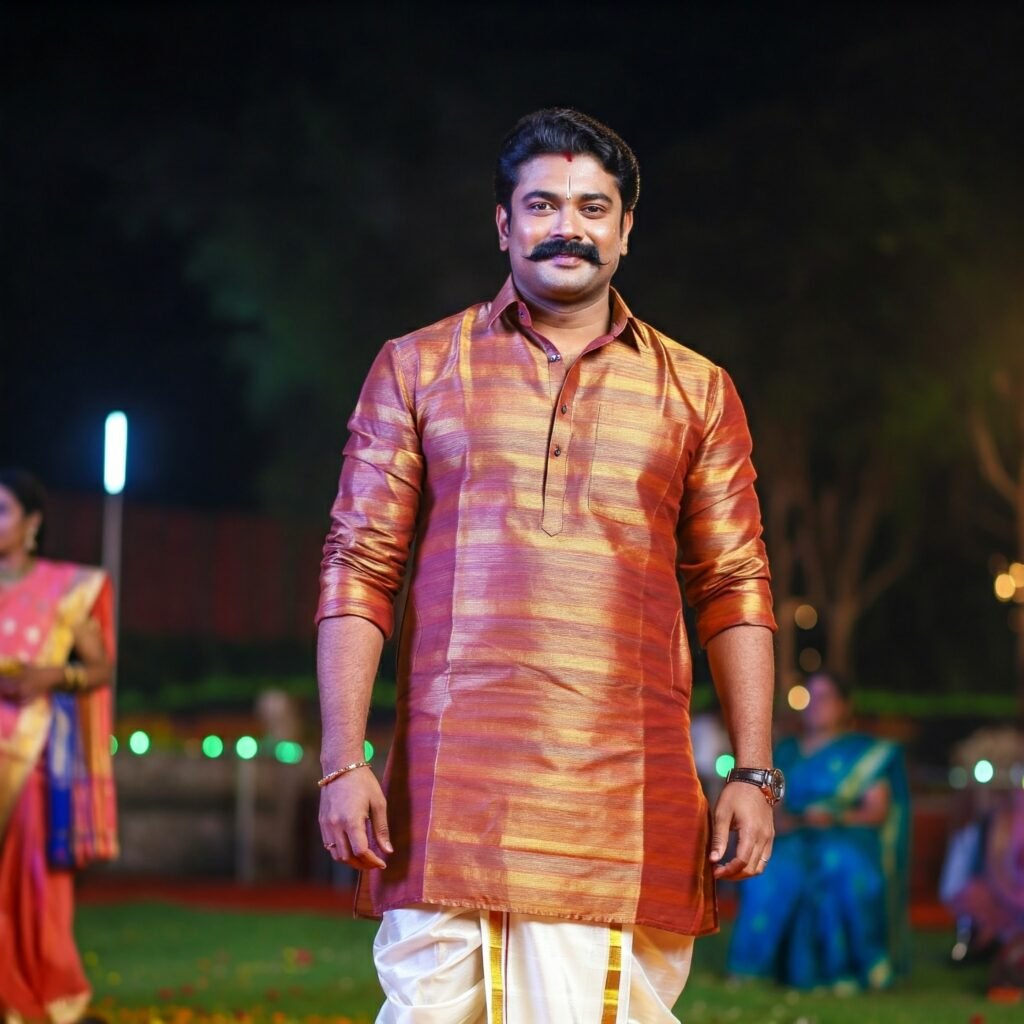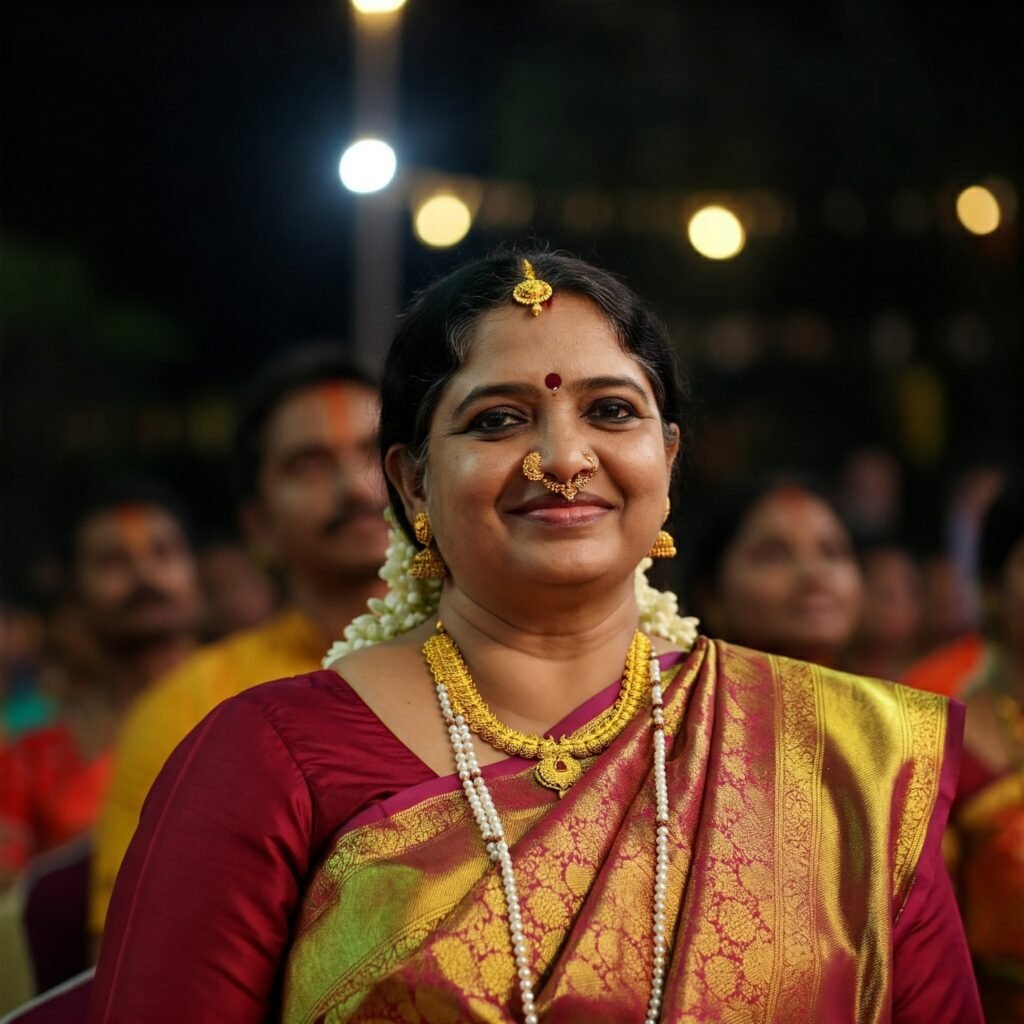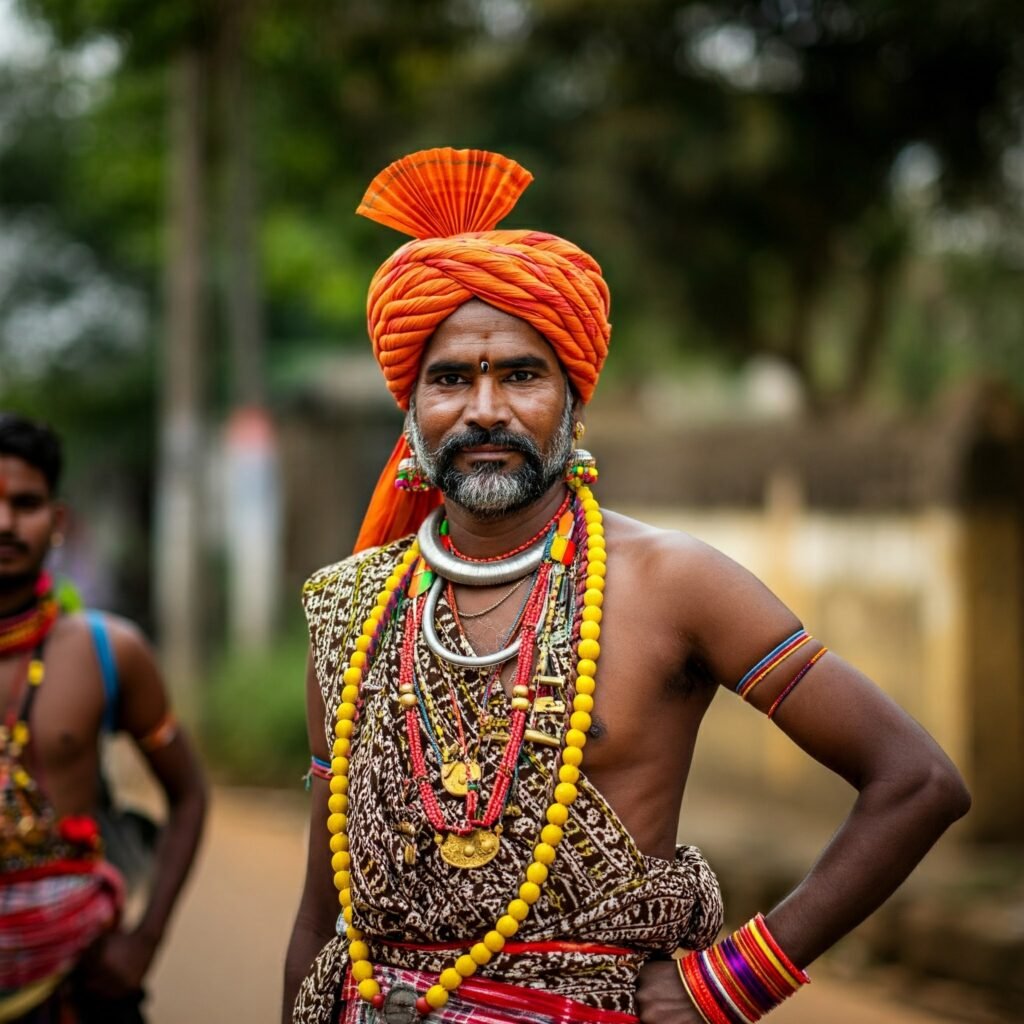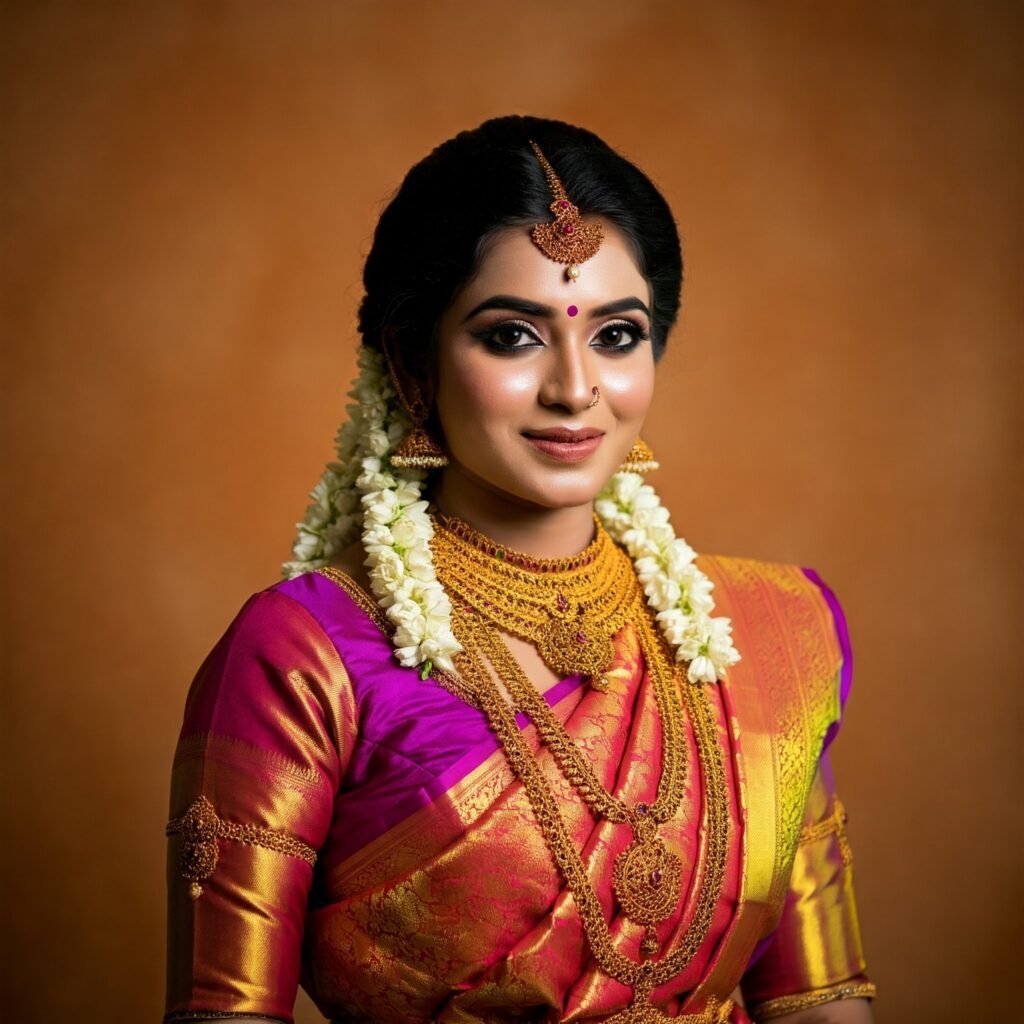Andhra Pradesh is situated in the Southern part of India. It is known for its rich culture, heritage, history and beautiful landscapes. This state is also known as the “Rice Bowl of India.” The two mighty rivers flowing and boasting the fertile plain of this state are the Godavari and Krishna rivers. The classical dance forms of this state are Kuchipudi and handloom saree known as Pochampally. There is so much more about this Indian state. However, today, we will specifically talk about the traditional dress of Andhra Pradesh.
Tip:The traditional dress of Andhra Pradesh is different from other Southern states of India.
Let’s go,
Traditional Dress of Andhra Pradesh for Men

The traditional dress of Andhra Pradesh for men is a simple dhoti and kurta. These are simple and plain-looking but elegant dressing styles that carry male masculine energy completely. Let’s know more about these dresses in detail:
1. Dhoti
A dhoti can also be spelled as dhotee´. It is a large piece of cloth that is wrapped around the waist and between the legs. This is further tucked behind the waist back. The length of the dhoti worn is as per the individual’s preference; it can be up to knee length or ankle length.
2. Kurta
Kurta is worn to cover the upper half of the body by men of Andhra Pradesh. They are also made up of cotton or silk. The length of the sleeves is up to the wrist or three-fourths or half. The total length of the kurta is up to the knee or short as per the personal desire.
3. Shirt
Some people also prefer to wear a shirt instead of a kurta. Also, as per the changing trends people have started wearing shirts and T-shirts. As these are also comfortable and easy to carry.
4. Lungi
The traditional dress of Andhra Pradesh for men also includes Lungis. These are a piece of clothing wrapped around the waist. It is similar to dhoti, just not wrapped between the legs. Muslim community prefer wearing pajamas under their kurta with a Fez Cap.
Traditional Dress of Andhra Pradesh for Women

Before the 14th century, women in Andhra Pradesh used to wear dhotis like men. But over the years, the length of the dhoti increased and later they started wearing it as an additional piece of cloth to wrap around their shoulders. Soon whole cloth was stitched together and turned into a saree. And, they started wearing sarees.
1. Saree
Saree is generally long almost 5½ meters or 6 yards, wrapped around a woman’s lower body, and the excess is used to cover the torse over the blouse. This excess part looks flowy and beautiful.
Women cover their upper body by wearing a blouse and then drape the excess part of the saree over it. The blouse covers up to mid-torso. These sarees are now available in different colours, patterns and designs which are further embellished with embroidery, motifs and other stones.
2. Langa Voni
Langa Voni is a two-piece or a half saree which is worn by girls or young women in the Southern part of India. It consists of a skirt, a blouse and a dupatta. Girls wore Langa Voni, untill they hit puberty age. They sometimes also wear it without a dupatta.
3. Petticoat
A petticoat is worn under a saree as an underskirt. Andhra Pradesh is a state well-known for its handloom industry. Women wear handloom sarees. Towns like Dharmavaram, Kanchi, Chirala, Mangalgiri, and Venkatagiri have a reputation for producing intricate handlooms.
Dharmavaram is popular for producing and distributing handmade silk sarees. In the Nalgonda district, Ikkat sarees are woven with a certain weaving pattern, especially geometric or zigzag patterns. Mangalgiri sarees are made of fine cotton. Another popular handloom saree are Gadwal saree.
Traditional Dress of Tribe Lambadies

Lambadies are also known as the Banjaras- a tribal group in Andhra Pradesh. The men of the tribe adapted to wearing dhoti and kurta, however, women still wear traditional dress.
The traditional dress of Andhra Pradesh for the Lambadi women has a long, ankle-length skirt, a blouse to cover the upper body, and a ghoongatt or dupatta. Their clothes are usually very bright, vibrant, and colourful. The dupattas and skirts have a thick border, mirror, beads, and stonework on different parts of the dress. These beautiful women also wear bangles, anklets, and other jewellery.
Traditional Dresses of Andhra Pradesh For Special Ceremonies

For the marriage ceremony, the bride wears silk sarees from Dharmavaram. These are beautiful sarees worn at festivals, parties, and weddings. The sarees are decorated with gold plating. A bride also wears a red colour.
The groom wears a kurta and a full-length dhoti with an overlapping pattern or a zigzag of excess cloth tucked in the front with the help of an additional piece. This is further draped over one of his shoulders. The groom also wears white or cream-coloured clothes.
Both the groom and bride wear some jewellery. A bride wears lots of bangles, necklaces, earrings, a payal, and a maang tikka on the forehead. Whereas, the groom wears head jewellery in the form of a gold chain wrapped on his forehead.
Another ceremony in South India is where a girl is celebrated when she hits puberty. For this special ceremony, the girl wears a Langa Voni which is given to her by her maternal grandparents during the first part of the ceremony. For the second part of the ceremony, she wore a saree given by her paternal grandparents. This is a complete transition that marks her transition from girl to womanhood.
Traditional Footwear And Textiles
Footwear: Both women and men wear either sandals or chappals as footwear. Some people also wear mojdis; which look like flat shoes.
Textiles: Some of the traditional textiles of Andhra Pradesh are Ikat Weaving, Chirala Textiles, Dharmavaram Sarees, Mangalgiri Sarees, Uppada Sarees, and Venkatagiri Sarees.
Special Fabric: Kalamkari
Kalamkari fabric is a cloth on which people paint mythological figures and stories. Natural dye is used to colour this fabric. This fabric is used to make sarees, salwar kameez, dresses, and other garments. This fabric is used in a few districts of Andhra Pradesh.
Read more about Traditional Dress of Arunachal Pradesh here.
Conclusion
The traditional dress of Andhra Pradesh beautifully shows the rich culture, heritage, detailed craftsmanship, and vibrant traditions. From the elegant silk sarees of Dharmavaram to the simple yet graceful dhotis and kurtas, the clothes are a blend of traditions and artistry.